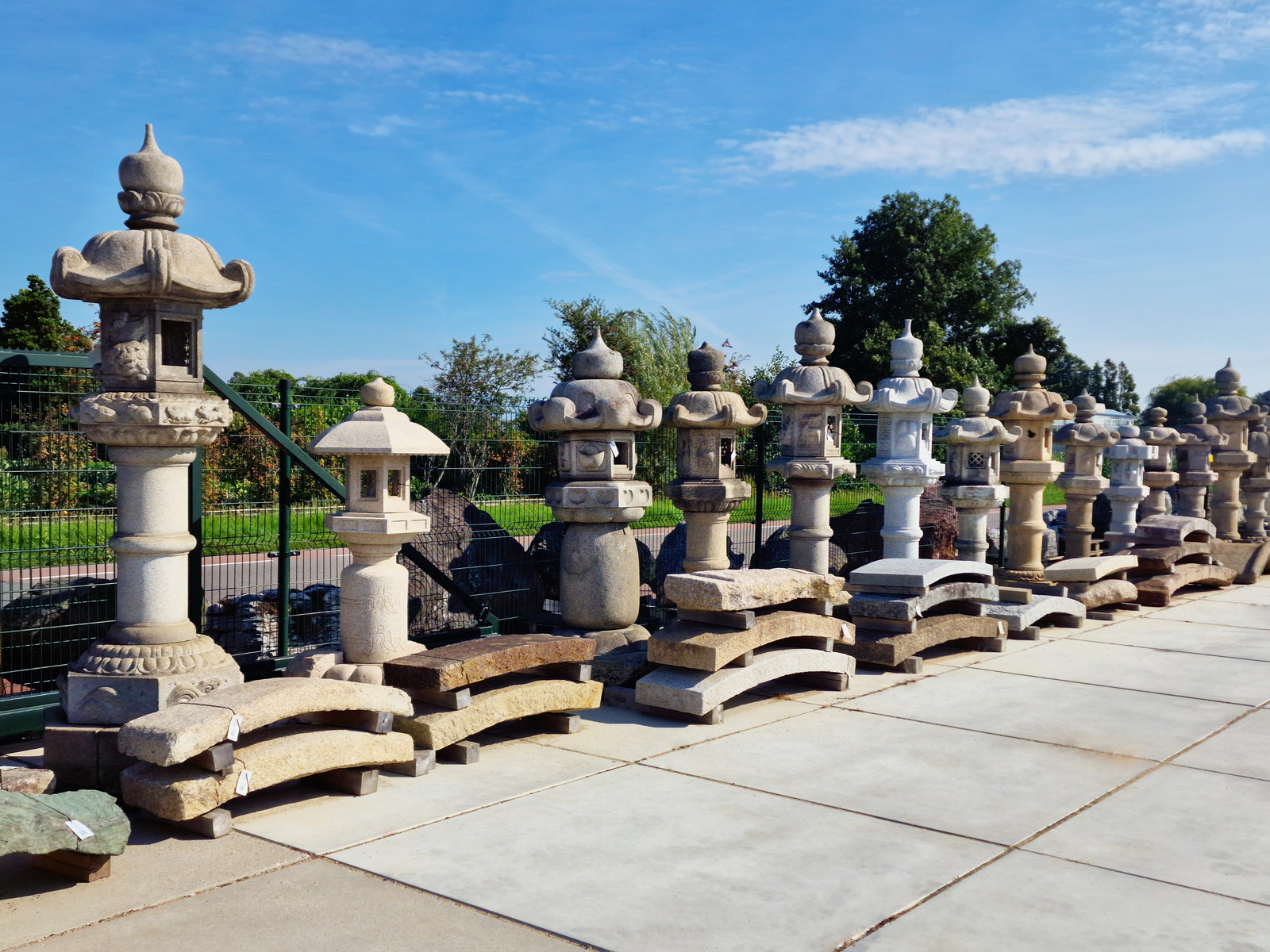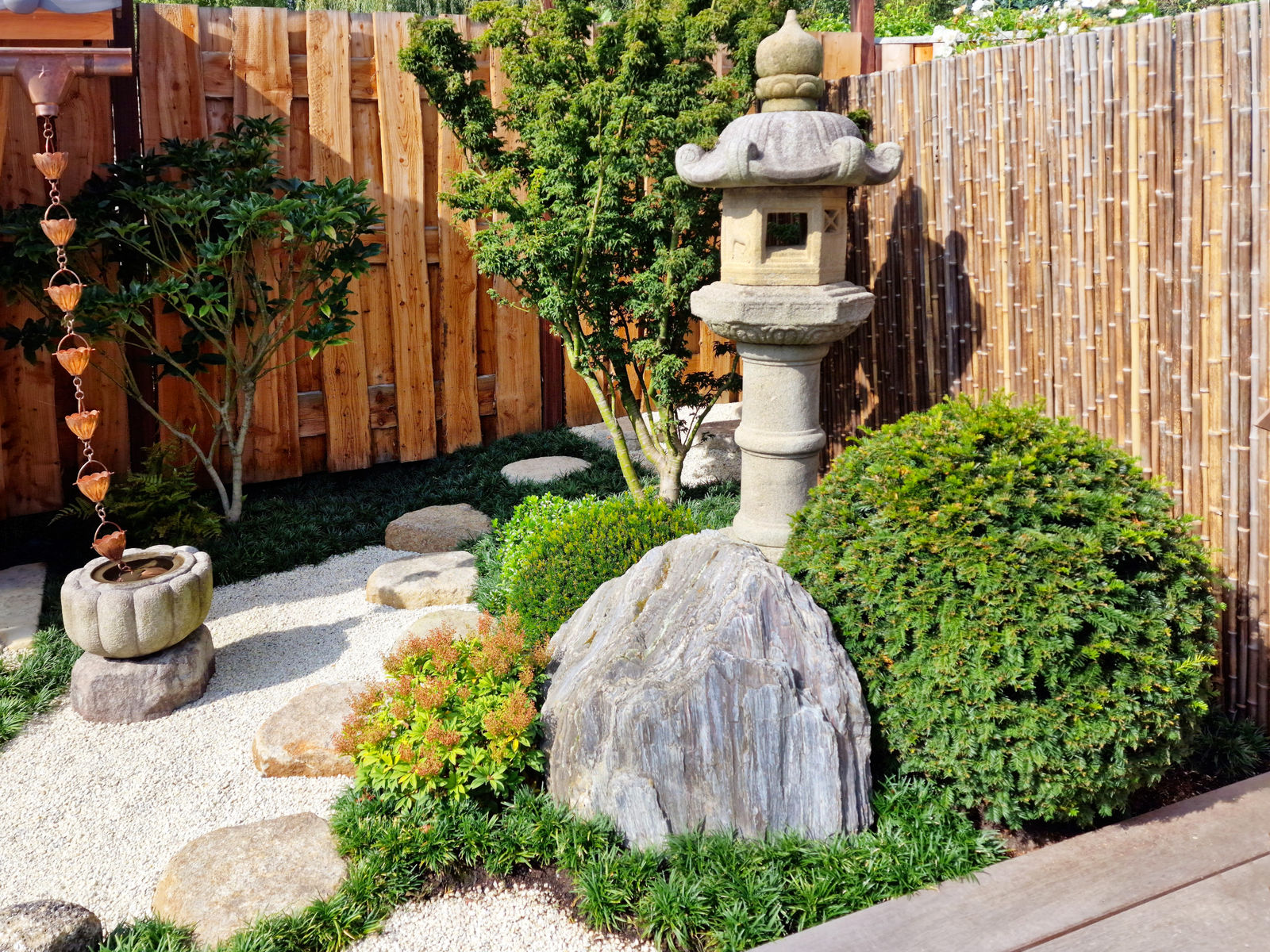Japanese Stone Lanterns - Information

The Enduring Charm of Traditional Japanese Stone Lanterns. Illuminate Your Garden with Authentic Ishidōrō from Yokoso Japanese Gardens. In the serene world of Japanese garden design, few elements evoke as much elegance, symbolism, and historical richness as the traditional Japanese stone lantern, or ishidōrō (石灯籠). These handcrafted masterpieces have graced temple grounds, tea gardens, and private sanctuaries for over a millennium. More than just aesthetic accents, they serve as spiritual markers, guiding visitors through a landscape of reflection and harmony. At Yokoso Japanese Gardens, we are proud to offer a rare and exclusive collection of authentic stone lanterns, hand-carved in Japan and available nowhere else in Europe with such craftsmanship and integrity.
A Brief History: The Origins of Ishidōrō
The tradition of using stone lanterns in Japan dates back to the Asuka period (6th to 8th century), introduced from China and Korea alongside the spread of Buddhism. Initially used to illuminate temple paths and shrine precincts, their practical purpose soon intertwined with spiritual and aesthetic symbolism. During the Heian period, they became prominent features in Shinto shrines and Buddhist temples. By the Muromachi and Edo periods, stone lanterns had found their way into private gardens and tea gardens (roji), promoted by influential tea masters such as Sen no Rikyū, who valued their subtle presence and symbolic guidance in the tea ceremony.
Types of Traditional Japanese Stone Lanterns
Over centuries, many distinct styles of stone lanterns evolved, each serving different purposes and suited to specific locations within the garden. The five basic components of a traditional lantern include the base (kiso), shaft (sao), platform (chūdai), light box (hibukuro), and roof (kasa).
Kasuga-dōrō (春日灯籠) - Named after Kasuga Taisha in Nara, these lanterns are tall, elegant, and feature a hexagonal or cylindrical body. They’re often placed near gates, pathways, or spiritual focal points in the garden.
Yukimi-dōrō (雪見灯籠) - These low-standing lanterns have wide, umbrella-like roofs that beautifully catch snow in winter. Often placed near ponds or streams, they are one of the most beloved styles in Japanese landscaping.
Oribe-dōrō (織部灯籠) - Rustic and asymmetrical, these lanterns are associated with the tea ceremony master Furuta Oribe. Typically placed in tea gardens, they embody wabi-sabi, beauty in imperfection and transience.
Tachi-gata (立ち型) - These tall, pedestal-based lanterns are often used in more formal gardens. Their height makes them ideal focal points along walkways or near large garden structures.
Ikekomi-gata (埋込型) - Meant to be partially buried into the earth, these lanterns appear grounded and natural. They blend seamlessly into informal or mossy landscapes.
Oki-gata (置き型) - Compact and freestanding, these are perfect for tabletop display or delicate garden corners. Their simplicity and portability make them versatile in both traditional and contemporary designs.
A Japanese stone lantern is made up of multiple independent parts that need to be carefully stacked on top of each other to create a perfectly balanced lantern.
The different parts are from top to bottom:
Hōju/Hōshu (宝珠) - The jewel at the top of the lantern
Ukebana (請花) - The foundation of the jewel
Kasa (笠) - The umbrella which protects the fire box from harsh weather conditions
Hibukuro (火袋) - The fire box
Chūdai (中台) - The platform of the fire box
Sao (竿) - The post
Kiso (基礎) - The foundation
Kidan (基壇) - The base platform
Placement in the Japanese Garden: Guidance from the Sakuteiki
The Sakuteiki (作庭記), Japan’s oldest surviving garden design manual, written during the Heian period (11th century), provides timeless principles for placing garden elements, including stone lanterns. It emphasizes harmony with nature, spiritual symbolism, and intuitive design. According to the Sakuteiki:
• Lanterns should follow the natural flow of the garden, avoiding forced symmetry or artificial alignment.
• Placement near water, especially for Yukimi-dōrō, highlights the harmony of earth and reflection.
• Lanterns beside a pond mirror their form in the water, creating a poetic scene.
• Along garden paths, tall lanterns like Kasuga-dōrō guide visitors and subtly mark transitions between spaces.
• At decision points or viewsheds, lanterns anchor visual movement, helping the garden 'pause and breathe'.
• Near tea houses or garden gates, lanterns signify the transition into sacred or meditative space.
Importantly, stone lanterns are not meant to dominate but to complement and enhance the natural flow of the landscape.
Materials Used: Earth Meets Artistry
At Yokoso Japanese Gardens, we honor the traditional methods and materials used to craft these lanterns. Each piece is hand-carved from natural Japanese stone, ensuring durability, uniqueness, and authenticity.Each lantern reflects not only the artistry of the carver but also the soul of the stone, making every piece one-of-a-kind.
Common Materials Include:
Granite (Shikoku granite) – Dense and weather-resistant, perfect for outdoor display across all seasons.
Kurama stone – Earthy and textured, used for rustic, naturalistic garden styles.
Oya stone – A porous volcanic rock that weathers beautifully, ideal for wabi-sabi aesthetics.
Uniquely Available at Yokoso Japanese Gardens
Unlike mass-produced reproductions, our authentic Japanese stone lanterns are sourced directly from artisan workshops in Japan. Every piece is carefully selected for its craftsmanship, historical integrity, and visual harmony.
Why choose Yokoso Japanese Gardens?
• Exclusive European distributor of handcrafted Japanese lanterns
• Ethically sourced, natural stone only
• Wide selection of traditional styles and sizes
• Expert consultation on placement, design, and maintenance
• Unique pieces that bring timeless elegance to your outdoor space
Whether you're creating a tranquil Zen garden, a roji for a tea ceremony, or a minimalist Japandi-style landscape, our lanterns provide the perfect finishing touch, rich in history, beauty, and spirit.
Discover Your Lantern Today
Stone lanterns are more than garden ornaments, they are guardians of light, storytellers in stone, and silent companions on the path to tranquility. Explore our exclusive collection of Japanese stone lanterns, only at Yokoso Japanese Gardens, and bring a piece of ancient artistry into your garden.
#JapaneseGarden #StoneLantern #YukimiDoro #KasugaLantern #JapaneseAesthetics #WabiSabi #Ishidoro #ZenGarden #TeaGarden #GardenDesign #LandscapeDesign #Sakuteiki #YokosoJapaneseGardens #JapaneseCraftsmanship #GardenInspiration














Contact Yokoso Japanese Gardens